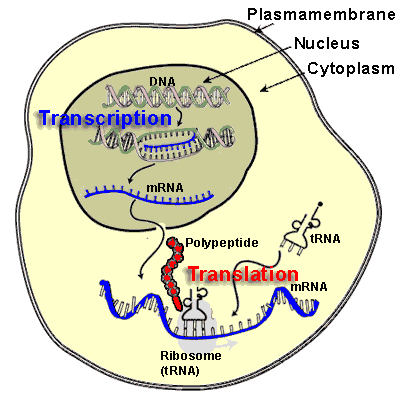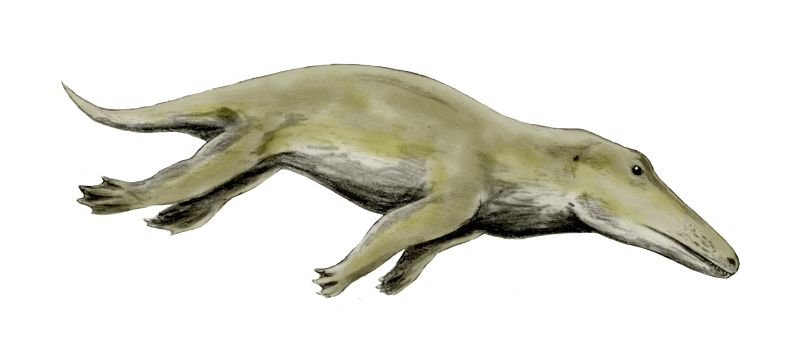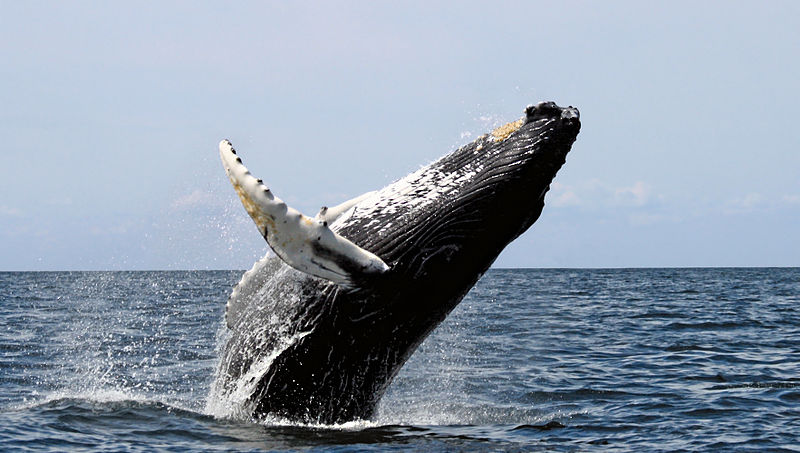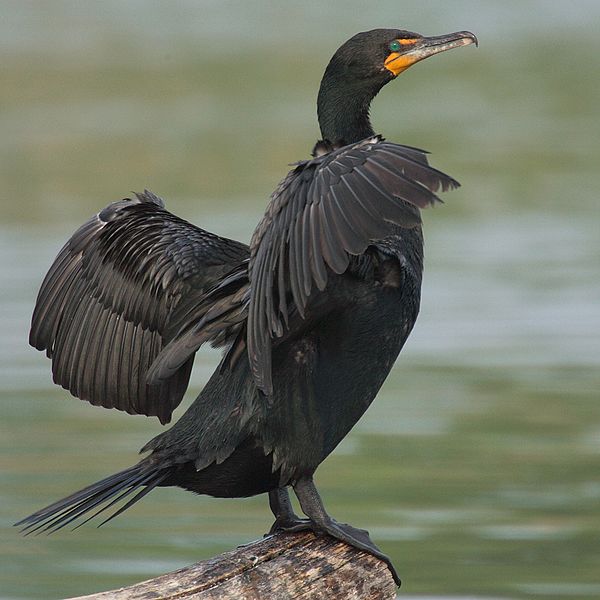Macroevolution is not scientifically verifiable because no one can ever empirically shown one species turning into another one. Evidence such as the fossil record merely shows that such organisms existed, not necessarily that they grew out of each other.
I see you have not read Lucaspa's Observed Speciation list. Well then, you are in for a treat. Here it is:
Observed Speciation - Lucaspa
General
1. M Nei and J Zhang, Evolution: molecular origin of species. Science 282: 1428-1429, Nov. 20, 1998. Primary article is: CT Ting, SC Tsaur, ML We, and CE Wu, A rapidly evolving homeobox at the site of a hybrid sterility gene. Science 282: 1501-1504, Nov. 20, 1998. As the title implies, has found the genes that actually change during reproductive isolation.
2. M Turelli, The causes of Haldane's rule. Science 282: 889-891, Oct.30, 1998. Haldane's rule describes a phase every population goes thru during speciation: production of inviable and sterile hybrids. Haldane's rule states "When in the F1 [first generation] offspring of two different animal races one sex is absent, rare, or sterile, that sex is the heterozygous [heterogemetic; XY, XO, or ZW] sex."Two leading explanations are fast-male and dominance. Both get supported. X-linked incompatibilities would affect heterozygous gender more because only one gene."
3. Barton, N. H., J. S. Jones and J. Mallet. 1988. No barriers to speciation. Nature. 336:13-14.
4. Baum, D. 1992. Phylogenetic species concepts. Trends in Ecology and Evolution. 7:1-3.
5. Rice, W. R. 1985. Disruptive selection on habitat preference and the evolution of reproductive isolation: an exploratory experiment. Evolution. 39:645-646.
6. Ringo, J., D. Wood, R. Rockwell, and H. Dowse. 1989. An experiment testing two hypotheses of speciation. The American Naturalist. 126:642-661.
7. Schluter, D. and L. M. Nagel. 1995. Parallel speciation by natural selection. American Naturalist. 146:292-301.
8. Callaghan, C. A. 1987. Instances of observed speciation. The American Biology Teacher. 49:3436.
9. Cracraft, J. 1989. Speciation and its ontology: the empirical consequences of alternative species concepts for understanding patterns and processes of differentiation. In Otte, E. and J. A. Endler [eds.] Speciation and its consequences. Sinauer Associates, Sunderland, MA. pp. 28-59.
Chromosome numbers in various species
http://www.kean.edu/~breid/chrom2.htm
Speciation in Insects
1. G Kilias, SN Alahiotis, and M Pelecanos. A multifactorial genetic investigation of speciation theory using drosophila melanogaster Evolution 34:730-737, 1980. Got new species of fruit flies in the lab after 5 years on different diets and temperatures. Also confirmation of natural selection in the process. Lots of references to other studies that saw speciation.
2. JM Thoday, Disruptive selection. Proc. Royal Soc. London B. 182: 109-143, 1972.
Lots of references in this one to other speciation.
3. KF Koopman, Natural selection for reproductive isolation between Drosophila pseudobscura and Drosophila persimilis. Evolution 4: 135-148, 1950. Using artificial mixed poulations of D. pseudoobscura and D. persimilis, it has been possible to show,over a period of several generations, a very rapid increase in the amount of reproductive isolation between the species as a result of natural selection.
4. LE Hurd and RM Eisenberg, Divergent selection for geotactic response and evolution of reproductive isolation in sympatric and allopatric populations of houseflies. American Naturalist 109: 353-358, 1975.
5. Coyne, Jerry A. Orr, H. Allen. Patterns of speciation in Drosophila. Evolution. V43. P362(20) March, 1989.
6. Dobzhansky and Pavlovsky, 1957 An incipient species of Drosophila, Nature 23: 289- 292.
7. Ahearn, J. N. 1980. Evolution of behavioral reproductive isolation in a laboratory stock of Drosophila silvestris. Experientia. 36:63-64.
8. 10. Breeuwer, J. A. J. and J. H. Werren. 1990. Microorganisms associated with chromosome destruction and reproductive isolation between two insect species. Nature. 346:558-560.
9. Powell, J. R. 1978. The founder-flush speciation theory: an experimental approach. Evolution. 32:465-474.
10. Dodd, D. M. B. and J. R. Powell. 1985. Founder-flush speciation: an update of experimental results with Drosophila. Evolution 39:1388-1392. 37. Dobzhansky, T. 1951. Genetics and the origin of species (3rd edition). Columbia University Press, New York.
11. Dobzhansky, T. and O. Pavlovsky. 1971. Experimentally created incipient species of Drosophila. Nature. 230:289-292.
12. Dobzhansky, T. 1972. Species of Drosophila: new excitement in an old field. Science. 177:664-669.
13. Dodd, D. M. B. 1989. Reproductive isolation as a consequence of adaptive divergence in Drosophila melanogaster. Evolution 43:1308-1311.
14. de Oliveira, A. K. and A. R. Cordeiro. 1980. Adaptation of Drosophila willistoni experimental populations to extreme pH medium. II. Development of incipient reproductive isolation. Heredity. 44:123-130.15. 29. Rice, W. R. and G. W. Salt. 1988. Speciation via disruptive selection on habitat preference: experimental evidence. The American Naturalist. 131:911-917.
30. Rice, W. R. and G. W. Salt. 1990. The evolution of reproductive isolation as a correlated character under sympatric conditions: experimental evidence. Evolution. 44:1140-1152.
31. del Solar, E. 1966. Sexual isolation caused by selection for positive and negative phototaxis and geotaxis in Drosophila pseudoobscura. Proceedings of the National Academy of Sciences (US). 56:484-487.
32. Weinberg, J. R., V. R. Starczak and P. Jora. 1992. Evidence for rapid speciation following a founder event in the laboratory. Evolution. 46:1214-1220.
33. V Morell, Earth's unbounded beetlemania explained. Science 281:501-503, July 24, 1998. Evolution explains the 330,000 odd beetlespecies. Exploitation of newly evolved flowering plants.
34. B Wuethrich, Speciation: Mexican pairs show geography's role. Science 285: 1190, Aug. 20, 1999. Discusses allopatric speciation. Debate with ecological speciation on which is most prevalent.
Speciation in Plants
1. Speciation in action Science 72:700-701, 1996 A great laboratory study of the evolution of a hybrid plant species. Scientists did it in the lab, but the genetic data says it happened the same way in nature.
2. Hybrid speciation in peonies
http://www.pnas.org/cgi/content/full/061288698v1#B1
3.
http://www.holysmoke.org/new-species.htm new species of groundsel by hybridization
4. Butters, F. K. 1941. Hybrid Woodsias in Minnesota. Amer. Fern. J. 31:15-21.
5. Butters, F. K. and R. M. Tryon, jr. 1948. A fertile mutant of a Woodsia hybrid. American Journal of Botany. 35:138.
6. Toxic Tailings and Tolerant Grass by RE Cook in Natural History, 90(3): 28-38, 1981 discusses selection pressure of grasses growing on mine tailings that are rich in toxic heavy metals. "When wind borne pollen carrying nontolerant genes crosses the border [between prairie and tailings] and fertilizes the gametes of tolerant females, the resultant offspring show a range of tolerances. The movement of genes from the pasture to the mine would, therefore, tend to dilute the tolerance level of seedlings. Only fully tolerant individuals survive to reproduce, however. This selective mortality, which eliminates variants, counteracts the dilution and molds a toatally tolerant population. The pasture and mine populations evolve distinctive adaptations because selective factors are dominant over the homogenizing influence of foreign genes."
7. Clausen, J., D. D. Keck and W. M. Hiesey. 1945. Experimental studies on the nature of species. II. Plant evolution through amphiploidy and autoploidy, with examples from the Madiinae. Carnegie Institute Washington Publication, 564:1-174.
8. Cronquist, A. 1988. The evolution and classification of flowering plants (2nd edition). The New York Botanical Garden, Bronx, NY.
9. P. H. Raven, R. F. Evert, S. E. Eichorn, Biology of Plants (Worth, New York,ed. 6, 1999).
10. M. Ownbey, Am. J. Bot. 37, 487 (1950).
11. M. Ownbey and G. D. McCollum, Am. J. Bot. 40, 788 (1953).
12. S. J. Novak, D. E. Soltis, P. S. Soltis, Am. J. Bot. 78, 1586 (1991).
13. P. S. Soltis, G. M. Plunkett, S. J. Novak, D. E. Soltis, Am. J. Bot. 82,1329 (1995).
14. Digby, L. 1912. The cytology of Primula kewensis and of other related Primula hybrids. Ann. Bot. 26:357-388.
15. Owenby, M. 1950. Natural hybridization and amphiploidy in the genus Tragopogon. Am. J. Bot. 37:487-499.
16. Pasterniani, E. 1969. Selection for reproductive isolation between two populations of maize, Zea mays L. Evolution. 23:534-547.
Speciation in microorganisms
1. Canine parovirus, a lethal disease of dogs, evolved from feline parovirus in the 1970s.
2. Budd, A. F. and B. D. Mishler. 1990. Species and evolution in clonal organisms -- a summary and discussion. Systematic Botany 15:166-171.
3. Bullini, L. and G. Nascetti. 1990. Speciation by hybridization in phasmids and other insects. Canadian Journal of Zoology. 68:1747-1760.
4. Boraas, M. E. 1983. Predator induced evolution in chemostat culture. EOS. Transactions of the American Geophysical Union. 64:1102.
5. Brock, T. D. and M. T. Madigan. 1988. Biology of Microorganisms (5th edition). Prentice Hall, Englewood, NJ.
6. Castenholz, R. W. 1992. Species usage, concept, and evolution in the cyanobacteria (blue-green algae). Journal of Phycology 28:737-745.
7. Boraas, M. E. The speciation of algal clusters by flagellate predation. EOS. Transactions of the American Geophysical Union. 64:1102.
8. Castenholz, R. W. 1992. Speciation, usage, concept, and evolution in the cyanobacteria (blue-green algae). Journal of Phycology 28:737-745.
9. Shikano, S., L. S. Luckinbill and Y. Kurihara. 1990. Changes of traits in a bacterial population associated with protozoal predation. Microbial Ecology. 20:75-84.
New Genus
1. Muntzig, A, Triticale Results and Problems, Parey, Berlin, 1979. Describes whole new *genus* of plants, Triticosecale, of several species, formed by artificial selection. These plants are important in agriculture.
Invertebrate not insect
1. ME Heliberg, DP Balch, K Roy, Climate-driven range expansion and morphological evolution in a marine gastropod. Science 292: 1707-1710, June1, 2001. Documents mrorphological change due to disruptive selection over time. Northerna and southern populations of A spirata off California from Pleistocene to present.
2. Weinberg, J. R., V. R. Starczak and P. Jora. 1992. Evidence for rapid speciation following a founder event with a polychaete worm. . Evolution. 46:1214-1220.
Vertebrate Speciation
1. N Barton Ecology: the rapid origin of reproductive isolation Science 290:462-463, Oct. 20, 2000.
www.sciencemag.org/cgi/content/full/290/5491/462 Natural selection of reproductive isolation observed in two cases. Full papers are: AP Hendry, JK Wenburg, P Bentzen, EC Volk, TP Quinn, Rapid evolution of reproductive isolation in the wild: evidence from introduced salmon. Science 290: 516-519, Oct. 20, 2000. and M Higgie, S Chenoweth, MWBlows, Natural selection and the reinforcement of mate recognition. Science290: 519-521, Oct. 20, 2000
2. G Vogel, African elephant species splits in two. Science 293: 1414, Aug. 24, 2001.
www.sciencemag.org/cgi/content/full/293/5534/1414
3. C Vila` , P Savolainen, JE. Maldonado, IR. Amorim, JE. Rice, RL. Honeycutt, KA. Crandall, JLundeberg, RK. Wayne, Multiple and Ancient Origins of the Domestic Dog Science 276: 1687-1689, 13 JUNE 1997. Dogs no longer one species but 4 according to the genetics.
http://www.idir.net/~wolf2dog/wayne1.htm
4. Barrowclough, George F.. Speciation and Geographic Variation in Black-tailed Gnatcatchers. (book reviews) The Condor. V94. P555(2) May, 1992
5. Kluger, Jeffrey. Go fish. Rapid fish speciation in African lakes. Discover. V13. P18(1) March, 1992.
Formation of five new species of cichlid fishes which formed since they were isolated from the parent stock, Lake Nagubago. (These fish have complex mating rituals and different coloration.) See also Mayr, E., 1970. _Populations, Species, and Evolution_, Massachusetts, Harvard University Press. p. 348
6. Genus _Rattus_ currently consists of 137 species [1,2] and is known to have
originally developed in Indonesia and Malaysia during and prior to the Middle
Ages[3].
[1] T. Yosida. Cytogenetics of the Black Rat. University Park Press, Baltimore, 1980.
[2] D. Morris. The Mammals. Hodder and Stoughton, London, 1965.
[3] G. H. H. Tate. "Some Muridae of the Indo-Australian region," Bull. Amer. Museum Nat. Hist. 72: 501-728, 1963.
7. Stanley, S., 1979. _Macroevolution: Pattern and Process_, San Francisco,
W.H. Freeman and Company. p. 41
Rapid speciation of the Faeroe Island house mouse, which occurred in less than 250 years after man brought the creature to the island.
Speciation in the Fossil Record
1. Paleontological documentation of speciation in cenozoic molluscs from Turkana basin. Williamson, PG, Nature 293:437-443, 1981. Excellent study of "gradual" evolution in an extremely fine fossil record.
2. A trilobite odyssey. Niles Eldredge and Michelle J. Eldredge. Natural History 81:53-59, 1972. A discussion of "gradual" evolution of trilobites in one small area and then migration and replacement over a wide area. Is lay discussion of punctuated equilibria, and does not overthrow Darwinian gradual change of form. Describes transitionals
Let me remind you, that the most common human mutation is CANCER.
And let me remind
you that the majority of mutations are phenotypically
Neutral. Therefore your statement is False.








